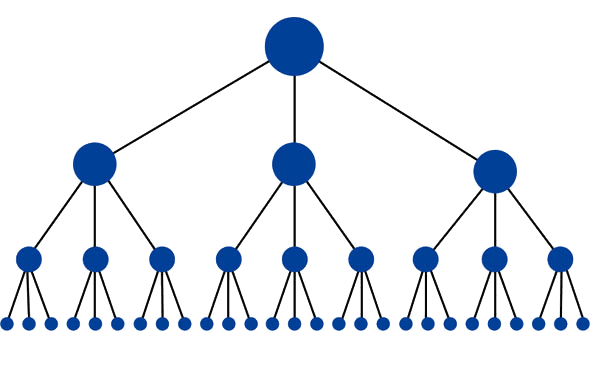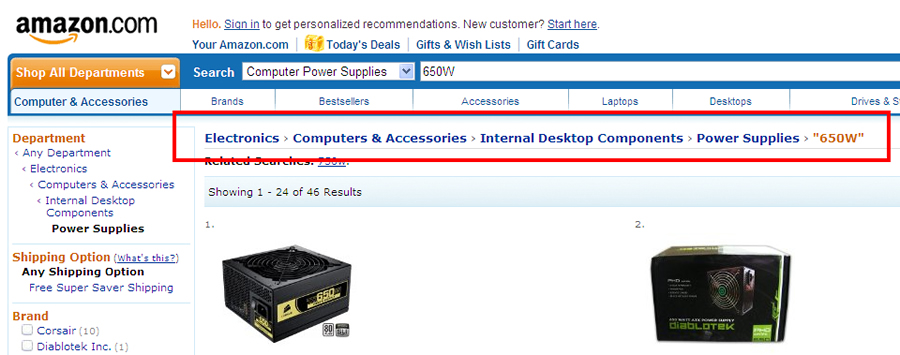Internal linking is the process of linking one page or post to another page or post in the same domain. For higher ranking, your website should have a strong linking structure.

Internal linking helps Google to find out the relevancy of the content of your website. It becomes easier for Google to find your pages or posts if they are linked properly. Along with this it also gives Google an idea of your website structure.
Internal links help users find the information they are looking for more easily and in a shorter time. It also helps build trust with your readers because they can retrieve what they need from within your site, instead of having to leave it for another site.
How do these links help your website?
They help your audience to navigate between pages which improve your SEO effort.
It helps to form a hierarchy of most important to least important pages.
It helps to establish the site structure.
Internal linking boosts your SEO efforts and creates a more user-friendly website that increases user experience.
Everyone uses internal linking, but not everyone got such success because they may not apply the correct strategies and plans. As when internal linking is used strategically it definitely boosts up website performance and traffic remarkably which ultimately boosts up SEO.
Why internal linking is important for your website?
Understand this with a simple example, consider google crawler or a user visit A page of your website, page A is linked to pages C and F then it is obvious that crawler or user may visit page C and F but there is no chance of visiting important pages B, D and E. It is necessary that google crawlers must visit and crawl all the pages otherwise your SEO strategies like Good Keyword, great content and best SEO activities, all go in vain if google doesn’t find your page.
When used correctly, internal links provide pages for search spiders to discover new content, increase visitor’s time on the website, and create a powerful network of related pages.
7 ways to Set- up a great internal linking strategy
Link equity should flow throughout your entire website that increases rankings of each page.
But it should keep in mind that links should be relevant and accurate.
Site Structure
It is always recommended to make a structure according to the pyramid that consists of a home page on the top, categories, and subcategories at middle and individual posts at the bottom. But all the pages should have a link to the home page. In this, you can group together the related pages under one category.

For example, if you have a website with tourist destination places then your link structure should be as- the home page at the top, countries or states at the middle and cities in those states at the bottom. This helps both Google and users to navigate easily in your website and also helps google crawlers to understand your website structure.
Find out which is the most important content
After considering a site structure the second step should be to find out the most important and complete content of your website. The important pages are those which are about the core of your business. It is basically those pages or posts that you want your visitors to reach if they search for your website. The more internal links you add to a page, the more Google considers it an important page.
Add Contextual Topics
If you have written many articles on a single topic you should link them with each other either in the content or at the end of the content. To do this you have to add a link in all articles of the topic and link back to the main page also.
For example- your website contains a topic On-page SEO. It covers many aspects, thus other topics related to it like how to optimize on-page, best on-page activities, strategies to improve on-page, etc should be linked to the main page and also the main page should be linked to all.
Add Post related section
There are some plugins that let you add related pages or posts individually. You can find out which topic is related to the main topic and link them on your main page together rather than including them in the content.
Add links to the popular or recent posts
You can also add your latest posts to the header or sidebar of your website to increase the traffic of your latest or recent posts. This way you can deliver the trending topics to your visitors that have more chances of clicking. This improves your overall traffic.
Include title tags in your internal links
You should definitely add a title tag to your internal link. The title tag gives the user an info tip about the link whenever the cursor passes through the link. This helps the user to decide whether the following link is worth it for him or not. Webmaster believes that the title tag is good for SEO. For example:
<a href=”http://www.unsplash.com” title=”Get unlimited book images to download”>Download close book image</a>
This helps users to find out that this particular page is for downloading multiple types of book images. It can be possible that he may visit the website whenever he needs to download an image.
Add breadcrumbs
Breadcrumb is a path to find a webpage on the website. It is created in the form of
home>category>sub-category
An example is shown below

Breadcrumbs help google spiders to stay on the website to crawl maximum pages at once. Big websites like amazon, Flipkart follow a proper breadcrumb structure to engage the user on their website.
Best practices for internal linking
An internal link structure can help the website visitors find pages on the site that are not included in the main navigation. Pages linked from the home pages can include internal links to other pages deeper within the site. This enables people to find relevant information, and it increases the amount of time they spend on the website.
Use keyword-rich anchor text
Must use such anchor text that depicts the topic of the page linked. This helps google crawlers to understand the relevance and accuracy of the page that is linked. For example if you want to link a page to guide about mobile SEO then the anchor text should be mobile SEO.
Don’t overdo internal linking
Internal linking is beneficial but it doesn’t mean that you link every page with every other page. Only relevant links should be used to send a visitor to know more about a single topic of the content. Internal links should be added according to content length.
Use link tools
There are some tools available that check your internal linking structure and guides future internal link building. Screaming frog is a popular tool to get a good understanding of internal linking and crawl your website.
Link to important pages
Mainly SEO experts believe that internal linking should be done for important pages that have the core value of a website. Therefore you should link to important pages.
Don’t use same anchor text for two pages
Never use the same anchor text for two different pages linking to different pages.
If you use the same anchor text for linking two different pages then it gives google a view that both pages have the same topic and content. So you should always use different anchor text for linking.
Importance of internal linking for SEO.
When used correctly, internal links provide pages for search spiders to discover new content, increase visitors’ time on the website, and create a powerful network of related pages.
1. Improves navigation.
Website navigation creates a great impact on the success of the site, its positive effects on user-friendliness, search engine rankings and conversions. On a website, main navigation internal links are generally used. They allow users to easily surf the site to find the information required. The homepage of a website has some type of navigation bars that directs visitors to the most important pages on the website. By including links to the website main navigation, one can increase the amount of time people spent on the site. This is seen as positive signals by Google and can boost the ranking of search engine result pages.
2. Create a website hierarchy.
Interlinks help in establishing a hierarchy of information on the website. Linkings from home pages can link to other subcategories pages on the website. This way pages can link to pages far deeper in the site’s architecture. It will improve user experience and keep people coming back for more.
3. The spread of link juice.
Internal links help promote ranking powers around websites. In case of just publishing a new page or resource on the website, an internal link to that page can be included from other high – performing pages on the website. This enables Google search crawler to find and index the new content. It can also transfer link juice (linking power) from established pages to new content thereby helping them appear higher in organic search results. This proves to be a great strategy to increase the overall value of the website.
4. Decrease bounce rate.
Internal linking plays an important role in decreasing the bounce rate. If a website has a bounce rate of 70 percent, that means the 70 out of 100 viewers of your website navigates away from the site after viewing only one page. The bounce rate is a mirror of the performance of the website. It determines how the website ranks in the search engine results. Google views sites with a higher bounce rate at a negative rate. Less the bounce rate, the higher is the quality of search engines.
Interlinking pages on the website encourages visitors to spend more time on the site, and finally decreases bounce rate. This sends positive signals to the search engine and improves the ranking of the search engine results.
5. Increase page views.
Internal linking not only decreases bounce rate but in addition, results in an increase of page views on the website. We can say that internal links prompt site visitors to navigate to other pages of the site rather than just viewing the page and moving away. If viewers surf a website and like the content, they are more likely to view more content. Here, the internal link plays the role of a facilitator.
6. Guides website visitors to high converting pages.
Internal linking can direct website visitors to high-converting pages. The first one will require the use of Google Analytics to know which pages on the website attract the most visitors and which pages have a higher conversion rate. This way the highest traffic pages can be linked to relevant, high conversion pages. More the visitors to the highest converting pages will inevitably result in more sales and revenues of the company.
Conclusion
An internal linking strategy is an important part of a strong SEO effort. Many people ignore UX and SEO value of building their own internal link structure. Backlinks play the leading role in SEO, their effects can be amplified through a great internal link structure that helps to improve website traffic and navigation excessively.
While a good and strategically-optimized internal link structure is like a treasure to get the top rankings for your website. Along with easy navigation and accessibility, internal linking defines the structure of a website to google and increases user experience by providing relevant material.

